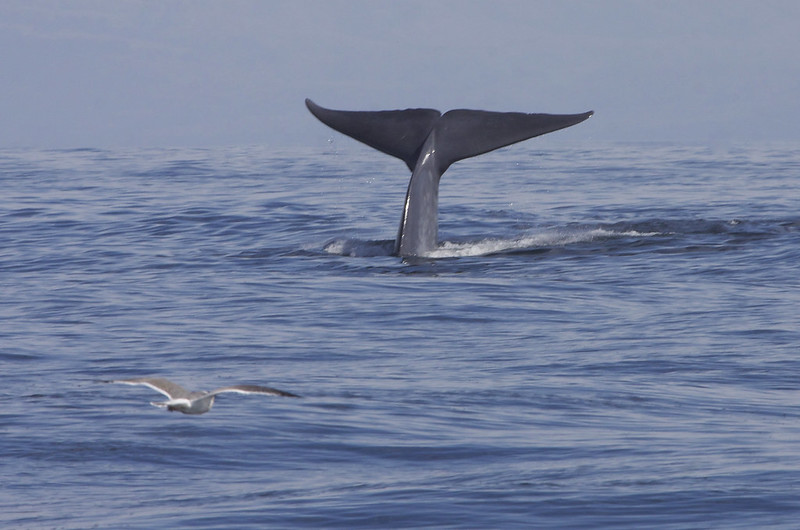- Biggest animal: The blue whale is the largest animal that has ever existed on Earth. Blue whales can grow up to 33 meters long and weigh up to 200 tons. A blue whale’s tongue can weigh as much as an elephant – and its heart as much as a car
- Mammals: Although blue whales feed in the depths of the ocean, like all mammals they need to surface for air. At the water’s surface, whales exhale air through their blowhole into a cloud of pressurized water vapor (blowstone) that rises up to 9 meters into the air
- Swimming alone: Blue whales usually swim alone, but occasionally in pairs or small groups
- Speed: Despite their large size, blue whales can swim at speeds of up to 55 km/h
- Pairing: Female blue whales only mate every three years and are pregnant for 11 – 12 months. Females usually only have one calf at a time
- Baby blue whales: Blue whale chicks can be up to 8 meters long and weigh up to 2,700 kg at birth. Blue whale calves suckle with their mother and consume more than 600 liters of milk per day. In the first 7 months of their life, blue whale pups gain around 90 kg per day
- Small brains: Blue whales have relatively small brains; they typically weigh around 6.92 kg and make up about 0.007% of the whales’ body weight
- Preservation: In 1966, blue whales were protected by the International Whaling Commission, but illegal hunting has been taking place ever since. Today, blue whales are still considered an endangered species
- Enemies: Due to their enormous size, blue whales have very few natural enemies – sharks and killer whales are some of the only ones (and the killer whale is the blue whale’s only predator). 25% of all adult blue whales are scarred by killer whale attacks. In addition, a number of blue whales die as a result of human hunting and collisions with large ships
- Number: It is estimated that there are between 10,000 and 25,000 blue whales in the world today. In the late 1800s, it is estimated that there were around 220,000 blue whales in the seas around Antarctica. The large decline in numbers is mainly due to human overexploitation in the 1920s and 1930s, when up to 30,000 whales were caught per year. Blue whale numbers were probably at their lowest in 1990, when the total population was estimated to be less than 10,000

Fact: The blue whale is a mammal and therefore needs to go to the surface for air. Once on the surface, it breathes air through its blowhole
Blue whale food
- Barder: The blue whale is a baleen whale, which means it has 540-790 black baleen plates that can grow up to 1 meter long. The baleen hangs down from the upper jaw and is used to filter food (plankton – also called ‘light crabs’ or ‘krill’) from the water that flows through the blue whale’s mouth
- Krill: Blue whales can consume up to 4 tons of krill per day and their stomach can hold around 1 ton of krill
- Calories: In a single mouthful, a blue whale consumes almost half a million kilocalories (kcal). An adult blue whale needs 1.5 million kilocalories (kcal) per day

Blue whales usually swim alone, but can also swim in pairs or small groups
- Colorful stool: Because there is so much krill in the blue whales’ diet, their feces are rainbow-colored
- Big bites: Blue whales can hold up to 110 tons of water in their mouths at a time
- Scuba diving: Because krill are mainly found deep in the ocean, blue whales typically dive below 100 meters to catch krill. A dive typically lasts 10 minutes, although 20-minute dives are also common. Blue whales also tend to dive exclusively for food during the day and feed at the surface at night
You can also see our article about whales here.





